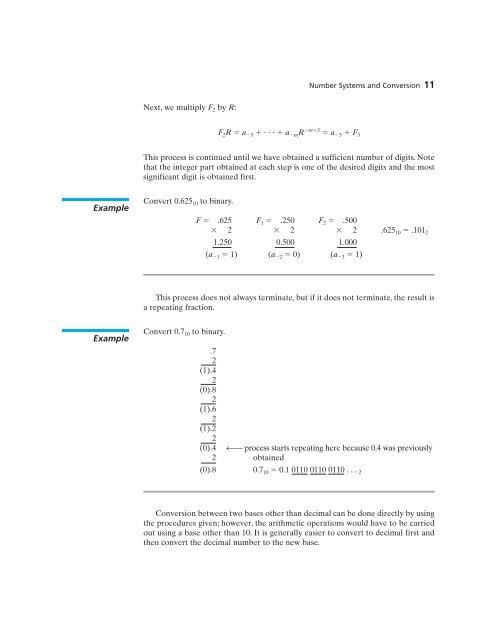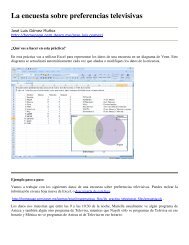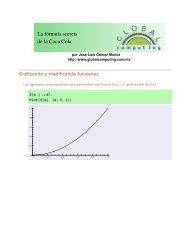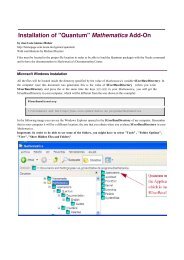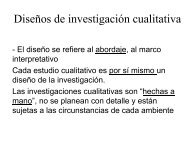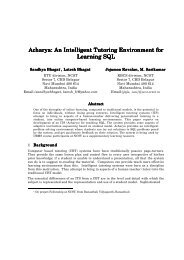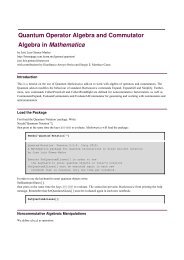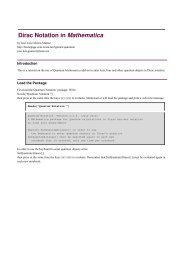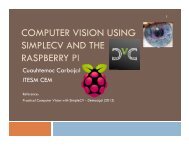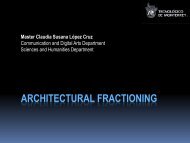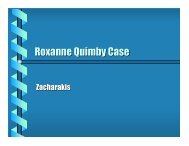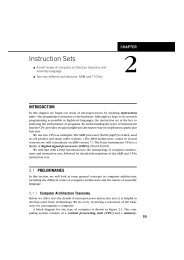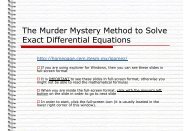Introduction Number Systems and Conversion
Introduction Number Systems and Conversion
Introduction Number Systems and Conversion
Create successful ePaper yourself
Turn your PDF publications into a flip-book with our unique Google optimized e-Paper software.
<strong>Number</strong> <strong>Systems</strong> <strong>and</strong> <strong>Conversion</strong> 11Next, we multiply F 2 by R:F 2 R a 3 · · · a m R m3 a 3 F 3This process is continued until we have obtained a sufficient number of digits. Notethat the integer part obtained at each step is one of the desired digits <strong>and</strong> the mostsignificant digit is obtained first.ExampleConvert 0.625 10 to binary.F .625 F 1 .250 F 2 .500 2 2 2 .625 10 .101 21.250 0.500 1.000(a 1 1) (a 2 0) (a 3 1)This process does not always terminate, but if it does not terminate, the result isa repeating fraction.ExampleConvert 0.7 10 to binary..72(1).42(0).82(1).62(1).22(0).4 ←⎯ process starts repeating here because 0.4 was previously2 obtained(0).8 0.7 10 0.1 0110 0110 0110 . . . 2<strong>Conversion</strong> between two bases other than decimal can be done directly by usingthe procedures given; however, the arithmetic operations would have to be carriedout using a base other than 10. It is generally easier to convert to decimal first <strong>and</strong>then convert the decimal number to the new base.


